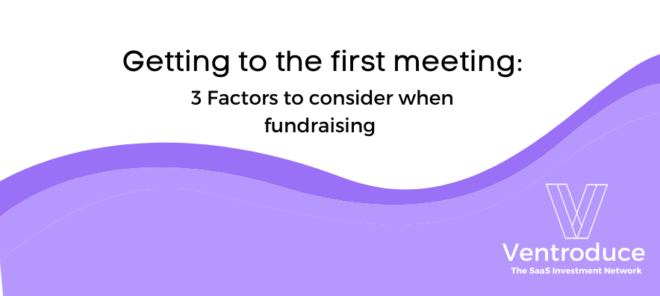“Software is eating the world”
According to Accel’s Euroscape 2021, private cloud companies in the US, Europe, and Israel have raised a whopping $78B YTD.
The rise of distributed cloud infrastructure and no/low-code platforms has meant it’s never been easy for people to launch a product, validate it at market, and scale to build great companies.
However, there’s one big hurdle that still stands in a founder’s way.. that’s having enough runway.
“Cash is king”
..Every step of building a successful SaaS company needs you to have it. Bootstrapping can work for some, most will consider taking on outside financing.
Venture or Angel capital is often the popular form of initial external seed funding with founders (but, not the only ones available)
It’s no news to anyone, early stage investing is inherently extremely risky. Seed capital is deployed based on low visibility of tractions, unproven business models, and unrefined products.
So, how do investors decide whether to take the first meeting? Here are 3 brief perspectives I get asked about most
The Market Opportunity
An investor’s return on investment is typically realized through your company exiting (IPO’s, M&A, Buyouts, etc.). The problem is that this model only works at scale. In order for an investment to make sense, your company needs to be addressing a $500M+ market.. if not higher in recent years
When it comes to market potential, there are 3 main options;
You can create a completely new market — by building products that address an unmet customer need. Something an investor might consider here is the level of indirect competitors. These are companies that operate in an adjacent market that could easily build and distribute a similar product to yours.
You can disrupt an already existing market. While this is an incredible achievement, it is the riskiest. Some might take your runway (your ability to survive) into consideration. Early traction in these markets requires a lot of re-education which is resources & time intensive. Your ability to showcase endurance becomes even more important.
Or, you can expand on an existing market through innovation. This is the most attractive channel as, unlike others, there is less of a need to convince that the customers already exist. Much like how Uber didn’t create the need for taxis but grew demand by merging it with easily accessible & low friction software.
The Product
Investors want to back to great products that have a long-lasting competitive edge. The product should satisfy a burning customer’s need with urgency. The aim here is to show that your product can be profit-generating, and that it is defensible against market incumbents & new entrants.
In the early stages, startups can be out resourced by existing companies. Or, flooded with new entrants which will reduce your margins through competition. Having a strong competitive advantage like intellectual property, branding, or distribution channels will help solidify your market position.
The Traction
What do you think of when I say traction?
My knee-jerk reaction has always been to look at revenue performance. Ultimately, traction metrics are a signal for Product Market Fit — showing that you have a solution in a variable market.
While ARR, MRR, CAC, LTV, etc. all play a huge part in identifying growth potential. Are they the right ones for the early products? I think the reason these are so popular, is that they are a universal language that helps people compare one opportunity to another.
You could look at active user growth, partnerships, customer acquisition rates, email list, current customers, customer saturation, etc.
..but, there’s a very fine line between valid & vanity metrics.
With Ventroduce, I’ve been trying to help founders paint the best/ most realistic picture of their company for investment
I side towards absolute revenue metrics.. for the moment.
But, as time goes on I’m finding that there’s no ‘one size fits all’ method of truly showcasing traction.
I believe it’s a mixture of revenue & product metrics that should be chosen on a case-by-case basis.
But..
These are by no means the only factors that investors look at. But they are a few key points that are worth reflecting on when searching for investors, building pitch decks, and starting your fundraising journey.
Our goal with Ventroduce is to help drive the virtuous cycle in SaaS by supporting fundraising founders. Join now to showcase your company and increase your exposure to investors.
[hubspot type=cta portal=6471807 id=6f131217-1c88-4fa9-88f3-becd54da803e]





